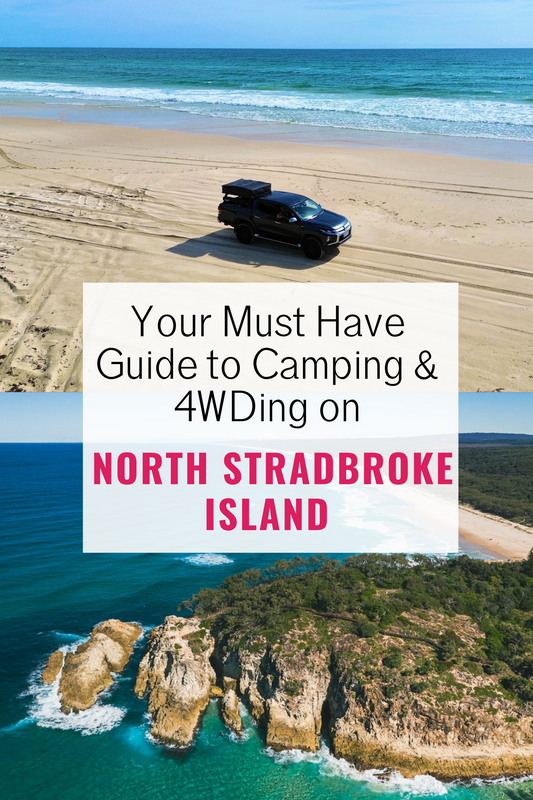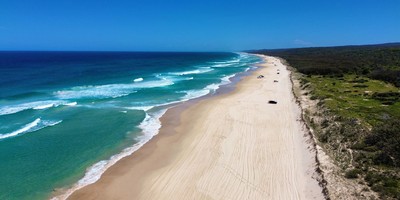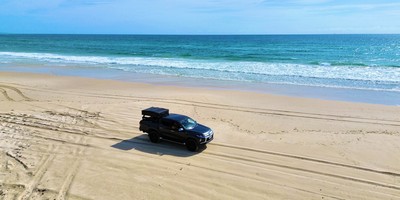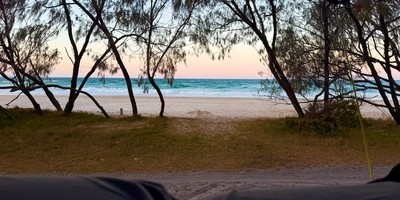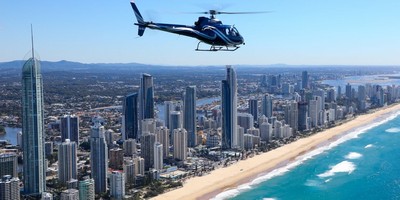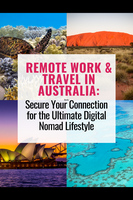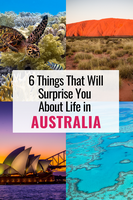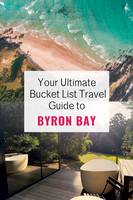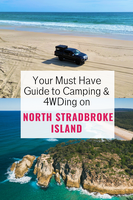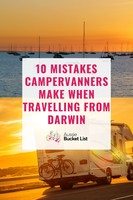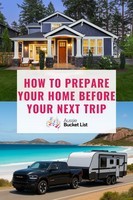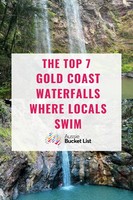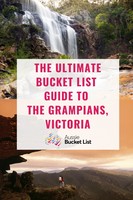North Stradbroke Island (Minjerribah) - Your Must Have Guide to Camping & 4WDing
Queensland 30 October 2025
If you’re looking for a standout experience in Queensland — one that blends rugged 4WD adventure with tranquil beach-front camping — then North Stradbroke Island (also known as Minjerribah) should go straight into your Aussie Bucket List. Here’s a full guide designed to help you plan, pack and enjoy the trip. I’ll be frank — this isn’t a luxury resort holiday. It’s more wild, more real, way more fun and absolutely worth it if you’re prepared.
The reason I created this guide for you, is because we know how daunting it can be planning your first four wheel driving and camping trip to North Stradbroke Island, and how difficult it is to find all of the information you need in one easy to access place. We have included everything you need to know for a successful Straddie camping trip in this one post for you.
Why North Stradbroke Island?
- Located just a short ferry ride from Brisbane, it's a great place to escape the hustle and bustle of the city for the weekend.
- The combination of beach-driving (on designated beaches), 4WD tracks through bush and dunes, and beachfront camping zones means you get to immerse yourself in nature and switch off from the world around you, whilst being only a short ferry ride away from Brisbane and the Gold Coast.
- It’s home to unique natural features: expansive sandy beaches, tea-tree tinted lakes, and rich wildlife (kangaroos, koalas, whales, turtles, dolphins). We were fortunate enough to see oceanic manta-rays, whales, dolphins, kangaroos and sea turtles all in one day!
- It is home to some of the most beautiful beaches in Australia.
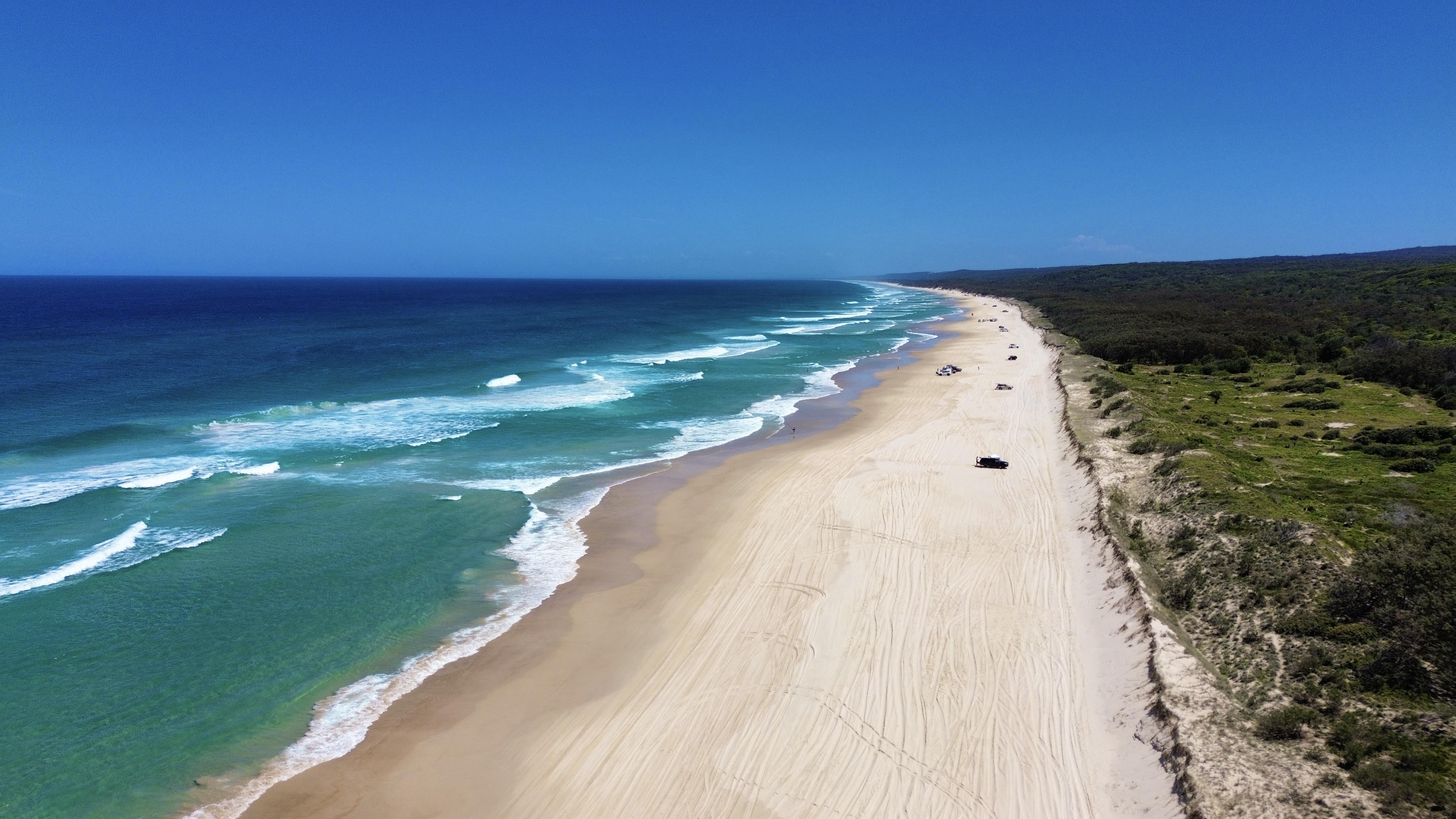
The above photo I took with my drone looking to the south from Main Beach.
1 - The 3 Essential Bookings You Must Make
1 - Ferry: Book your ferries via SeaLink here: SeaLink Ferries Booking Page
2 - Camping ground. Find the camping ground you would like to book, and book your camping grounds here: North Stradbroke Island (Minjerribah) Camping
3 - 4WD Vehicle Access Permit (for Main Beach and Flinders Beach): North Stradbroke Island (Minjerribah) 4WD Permit
2 - Getting There & Essentials
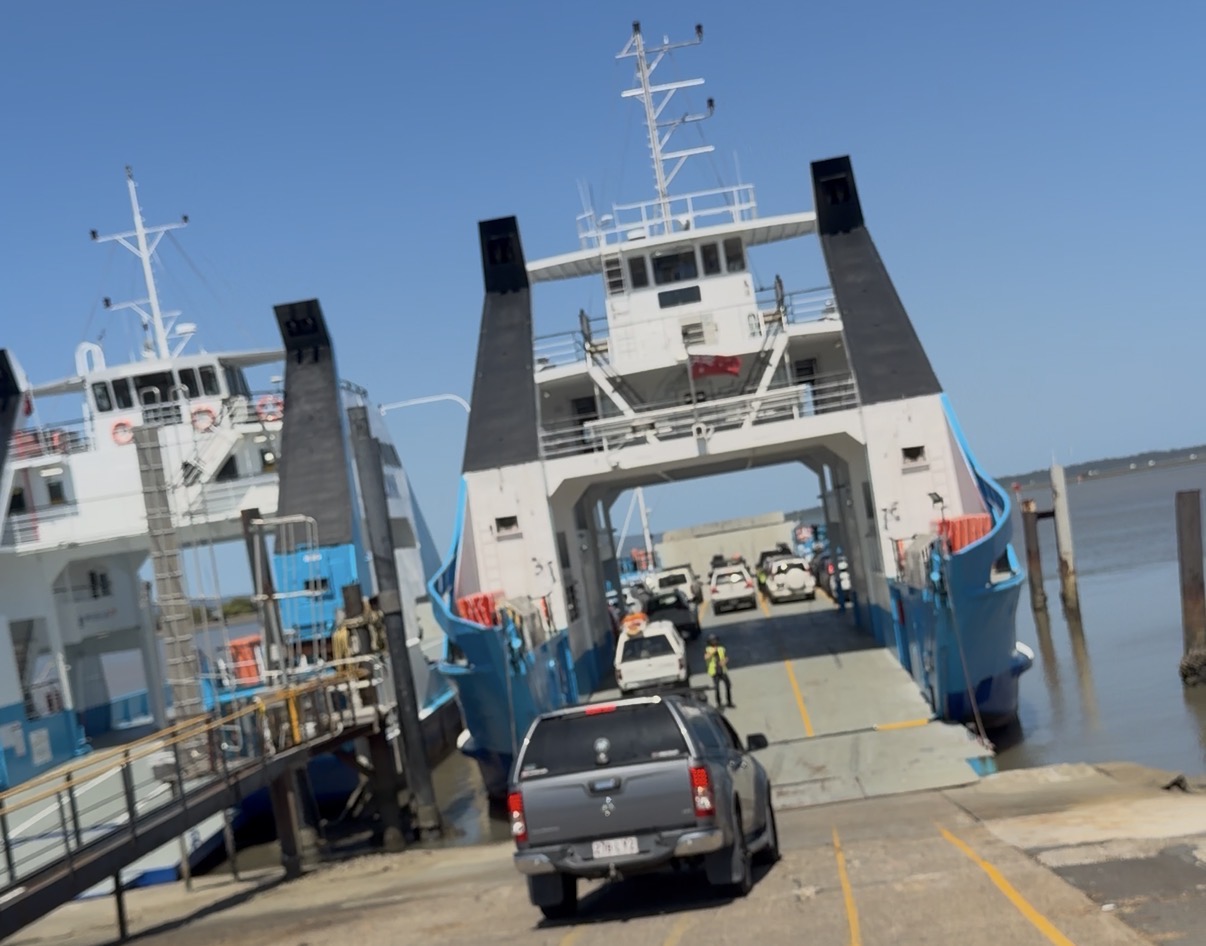
Ferry + Vehicle
- If you’re going with a vehicle (4WD recommended for beach access), you’ll jump on a vehicle ferry from Cleveland (Toondah Harbour) to the island’s Dunwich terminal.
- Arrive early and book ahead, especially on weekends and school holidays — ferries sell out.
Permits & Access
- Driving on beach zones and 4WD tracks requires specific vehicle access permits. For example, accessing the beach in a 4WD requires a permit through the island’s camping / vehicle-access authority.
- Driving on sand means you need to know what you’re doing: lower tyre pressure, avoid high tide zones, stick to harder sand, stay off dunes and always respect the environment.
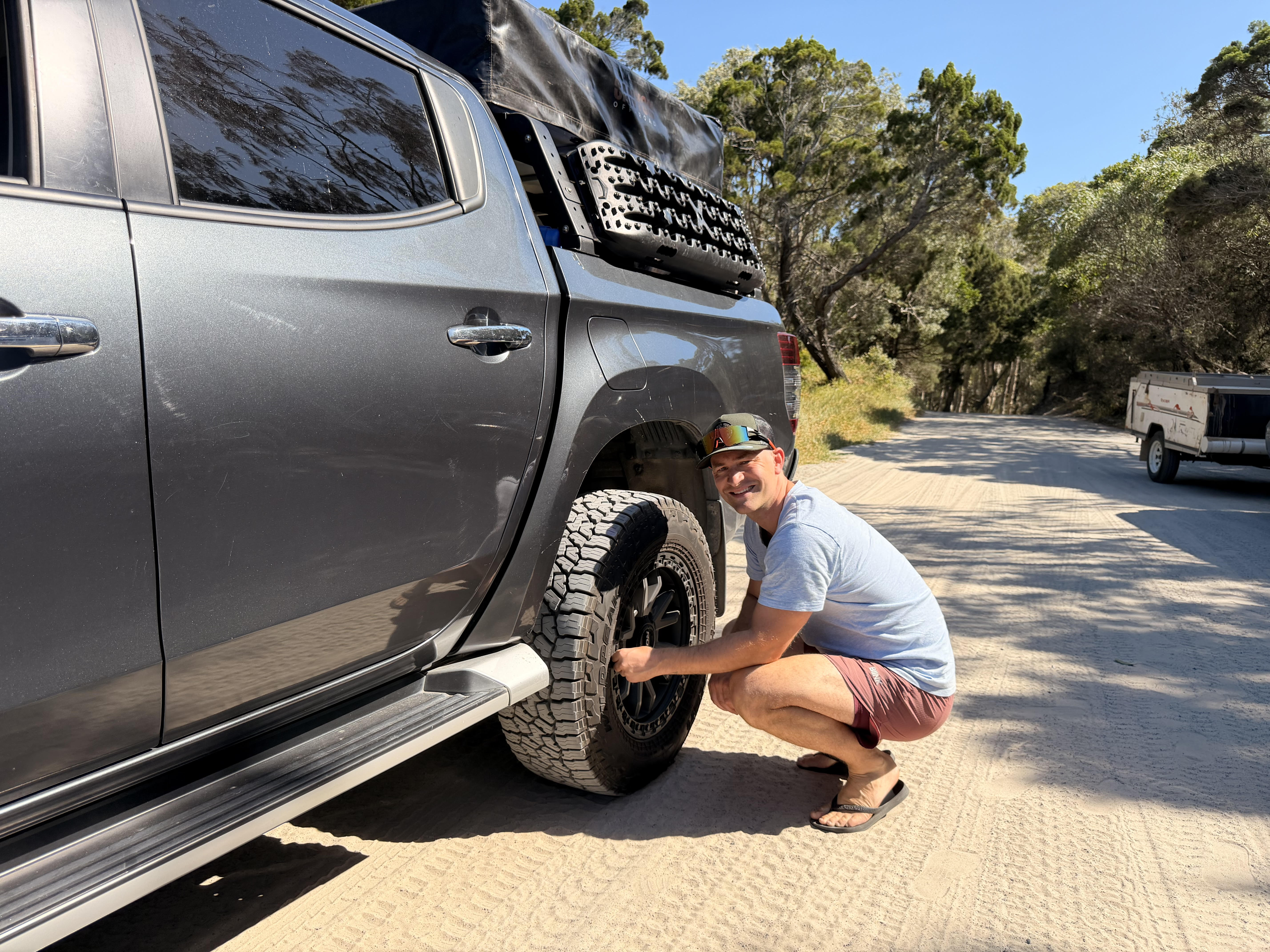
Vehicle Requirements
- A true 4WD is highly recommended if you’re heading into beachfront zones (especially Main Beach) or inland sandy tracks. Rental 4WDs are available on the island if you don’t bring your own.
- Even with a 4WD, you’ll want recovery gear, tyre-gauge, air compressor / deflator, shovel and basic tools.
3 - Best 4WD Tracks & Driving Tips
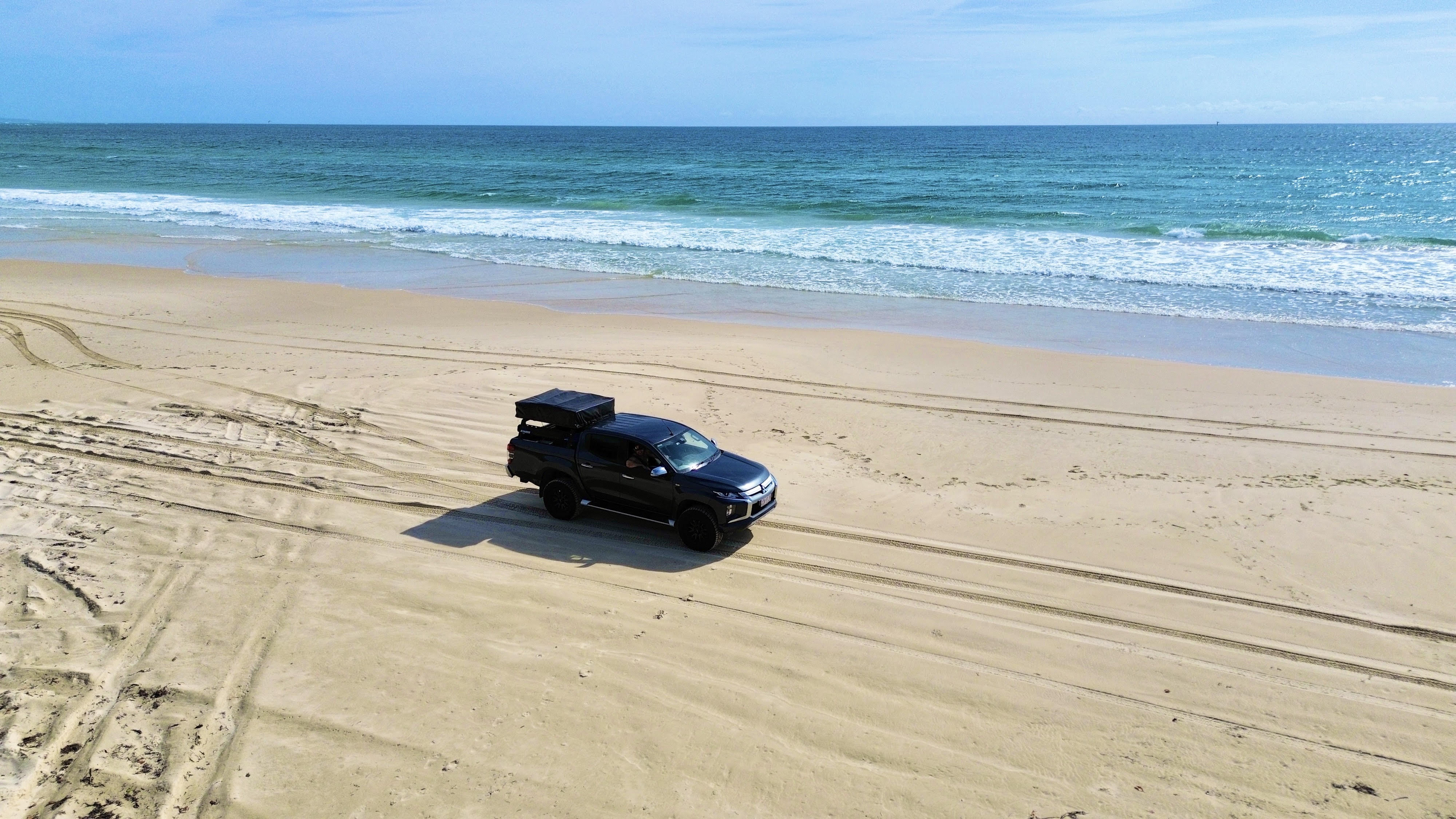
Top Tracks
- Main Beach (East Coast): Roughly a 38 km stretch of beach where 4WD is permitted. Ideal for those wanting remote beach-camping and beach-driving.
- Flinders Beach (North side): Shorter (c. 7km) but offers beach-camping zones accessible by 4WD.
- Tripod Track (Interior): A sandy inland track through bush, for drivers wanting more than just beach.
Pro Tips for Safe Driving
- Tyre Pressure: Drop your tyre pressure (18-22 psi often recommended) before entering soft sand.
- Tide Times: Avoid driving near high tide or during tide windows when the sand is too soft.
- Speed Limits & Rules: On beaches, stay under posted speed limits (often 40 km/h or less), don’t drive near swimmers or wildlife, don’t park in dunes or waterline.
- Track Conditions: After rain, some tracks become boggy or impassable. Check conditions in advance.
- Wildlife: Always drive cautiously and keep eyes out for signs of wildlife on the beaches and tracks.
4 - Camping Zones & Accommodation Options
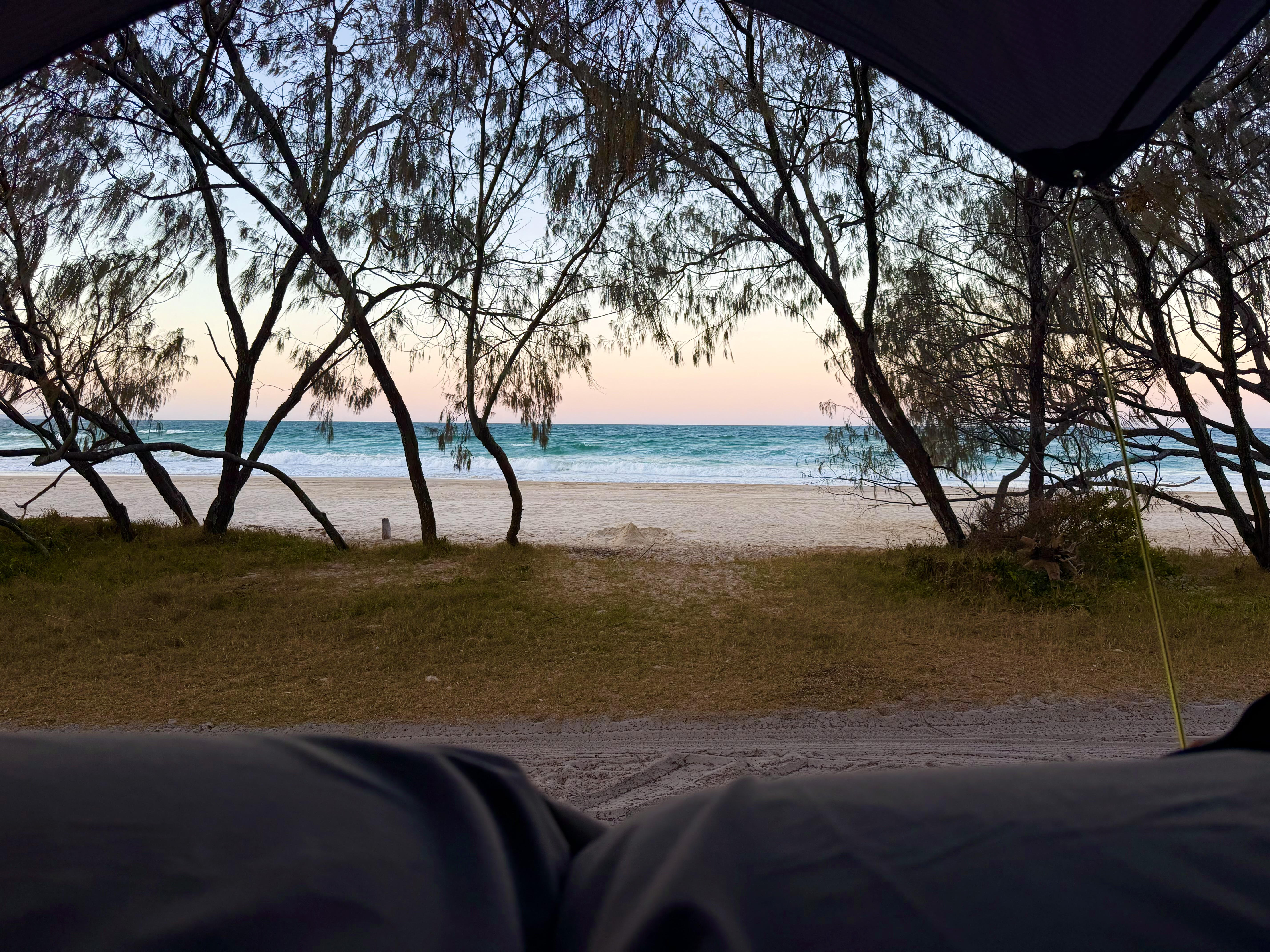
I took the above photo from the window of our rooftop camper at Flinders Beach, camping area H.
Beach-Front Camping (For 4WDers)
- Flinders Beach Camping: Basic facilities (composting toilets, no showers), remote, wild feel. Access via 4WD only. We loved Flinders Beach because we could have our own camp fire, and there were composting toilets available. Also, it was absolute beach front camping, so it was amazing waking up to the sunrising over the ocean each morning. Absolutely magical.
- Main Beach Camping: Remote, minimal infrastructure, ideal for self-sufficient campers with a 4WD. The campsites are set back further from the water then on Flinders, so we prefer Flinders Beach camping.
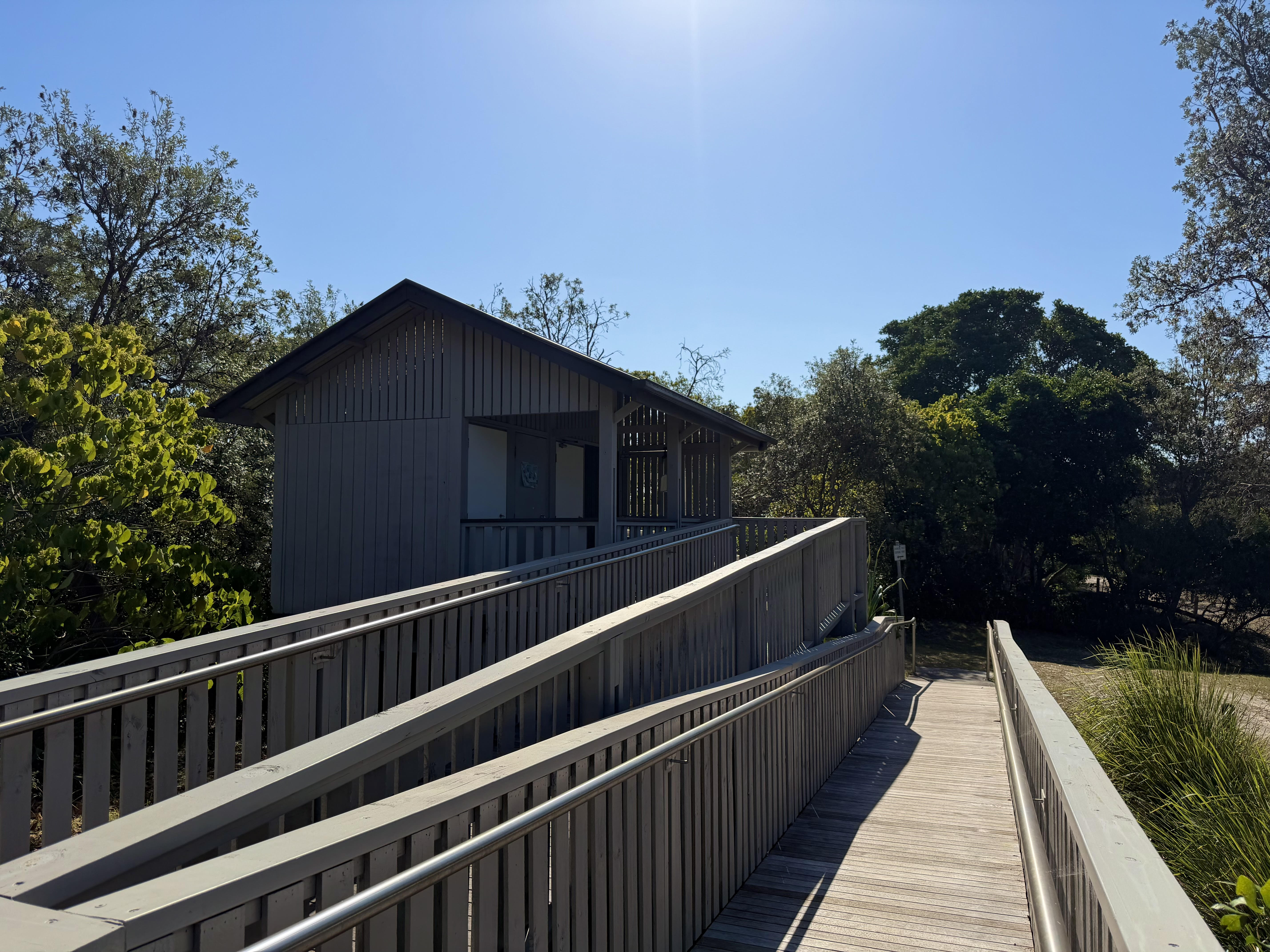
I took the above photo of the toilet block at Area H on Flinders Beach Camping Grounds. They were clean, had hand soap stocked and always toilet paper available.
More Comfortable Campgrounds (All Cars Ok)
- If you don’t have a 4WD or prefer convenience, sites such as Adder Rock, Amity Point, Cylinder Beach, Home Beach offer powered/unpowered sites, showers, BBQs, and are accessible by regular vehicle.
Booking & Rules
- Book well ahead for campsites, especially beachfront ones. These spots fill quickly.
- Some beachfront zones allow open fires (check fire-season rules) and others don’t; check current regulations.
5 - What to Pack & Prepare
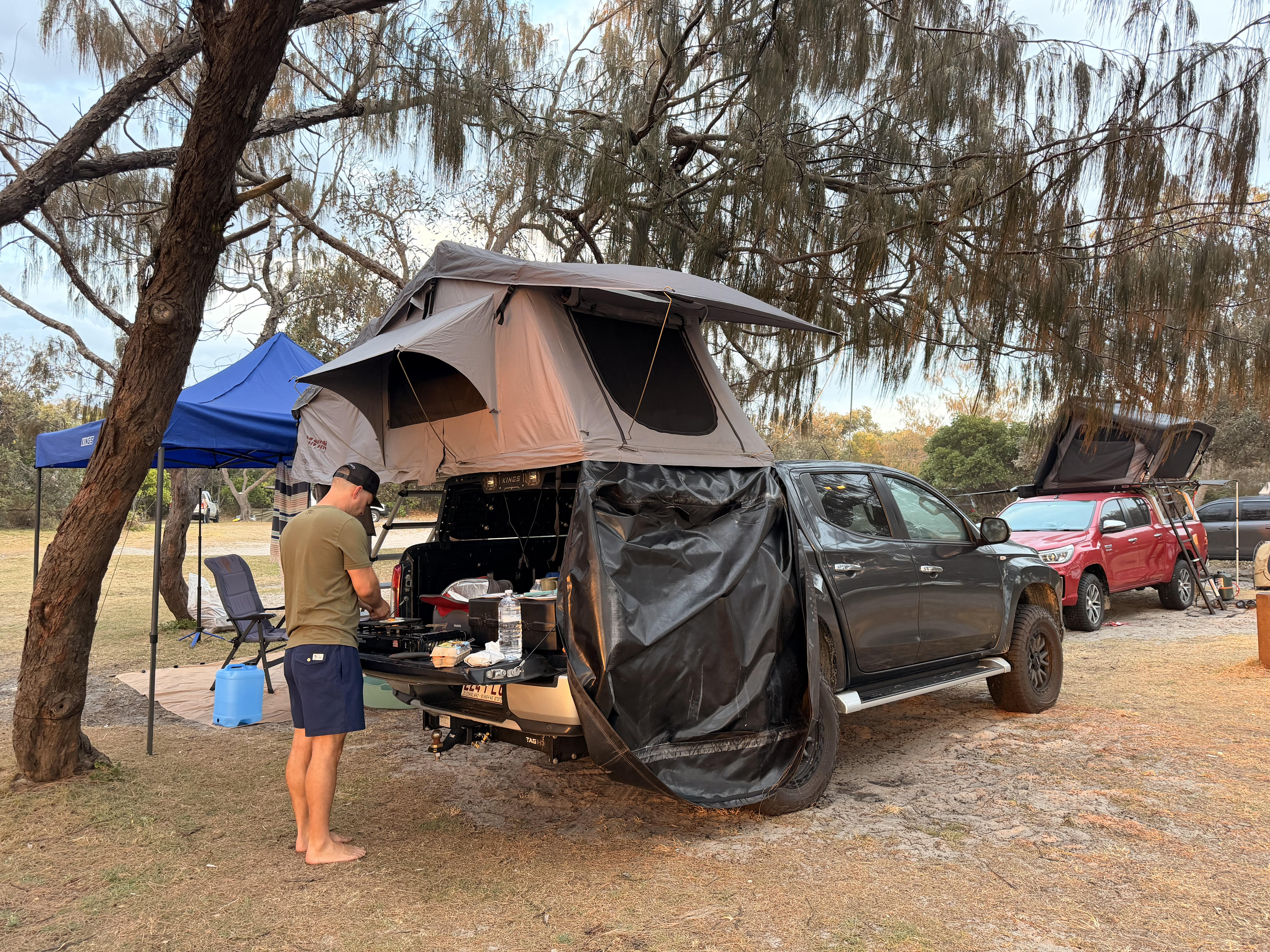
Camping Gear Essentials
- Tent (with sand-proof pegs if beachside), sleeping bags (evenings can be cooler), groundsheet
- Camp stove + fuel, cooking gear, headlamp/lantern, chairs
- Water-proof bags / sealed containers for sand and salt
- Fire-safe equipment if fires permitted
- Esky with ice
4WD / Beach Driving Gear
- Recovery gear: shovel, traction aids, snatch strap, rated shackles.
- Air compressor to re-inflate tyres after beach driving (not totally necessary as there is a servo with an air compressor at Point Lookout Roadhouse you can use) .
- Tyre gauge (to test tyre pressure when deflating).
- UHF radio if travelling in convoy. Also, not totally necessary as there is phone reception in most places on the island, including Flinders Beach.
- Basic tool kit, spare tyre in good condition.
General Items
- Plenty of food and drinking water for the duration of your trip. There are small stores on the island at Adder Point and Dunwich, but it is much cheaper to purchase these items from the mainland.
- Sunscreen, hat, sunglasses, reef-safe insect repellent.
- Cooler box for food.
- First-aid kit.
- Offline maps / GPS device (mobile signal can be patchy).
- Respectful mindset: this is country of the Quandamooka People — leave no trace, respect wildlife and habitats.
6 - Top Things to Do (When You Pull Up Camp)
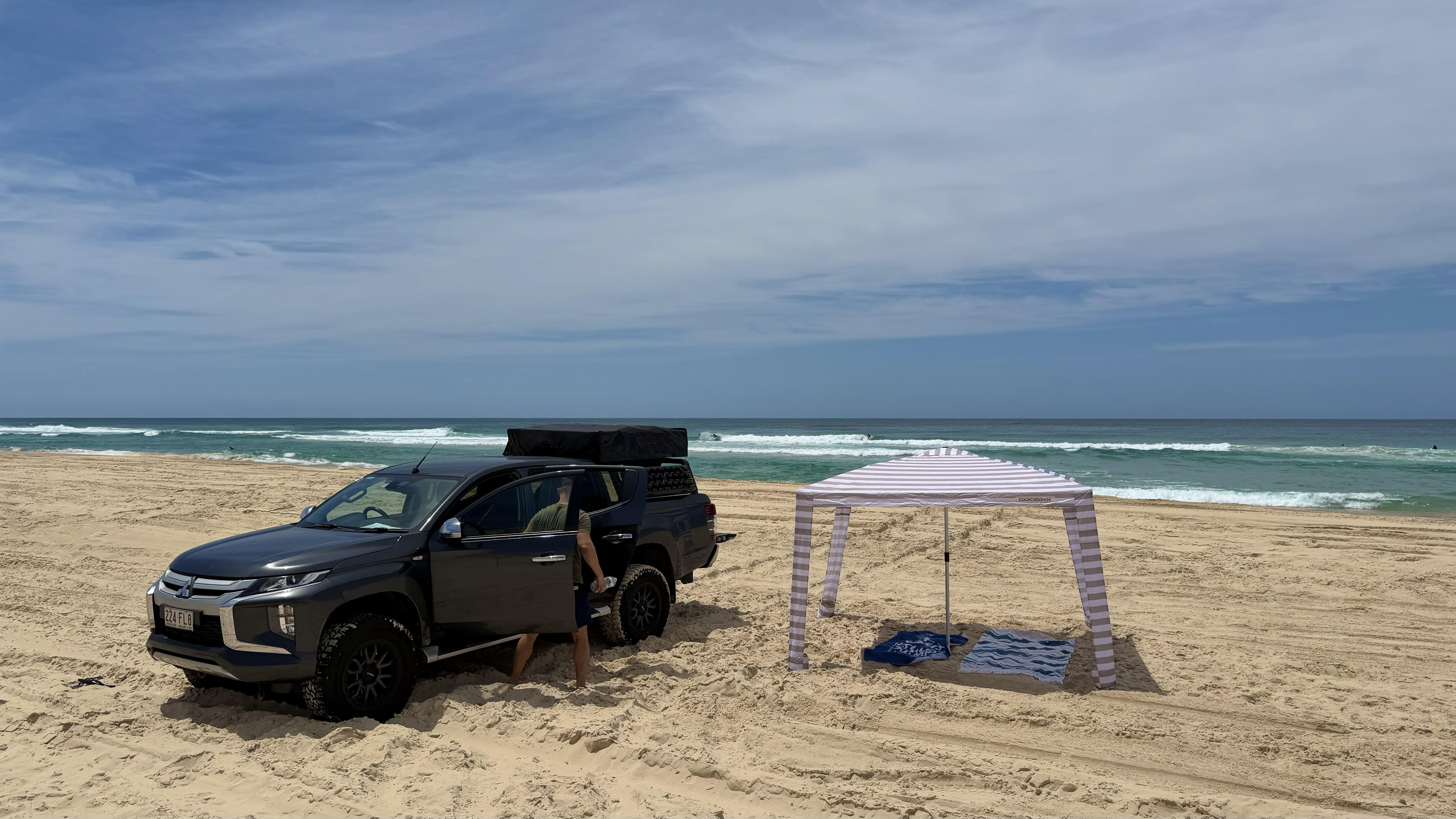
- Beach Drives & Fishing: On Main Beach or Flinders, you can drive, fish, maybe spot turtles or rays.
- Bush & Lake Escapes: Visit tea-tree-tinted Brown Lake (Bummiera) for a freshwater dip.
- Walks & Viewpoints: North Gorge Walk near Point Lookout is an absolute must! We spotted dolphins, sea turtles and whales from this vantage point when visiting in October. See further details on North Gorge Walk and add to your Aussie Bucket List here: North Gorge Walk.
- Surfing / Snorkeling: Main Beach offers good breaks for surfing. For snorkeling, near rocky outcrops you might spot rays and reef-life.
- Wildlife: Kangaroos at dusk on the beach, koalas in the bush, marine life offshore — and
- Culture: Cultural tours with Quandamooka owners are worth checking out.
7 - Best Time to Visit
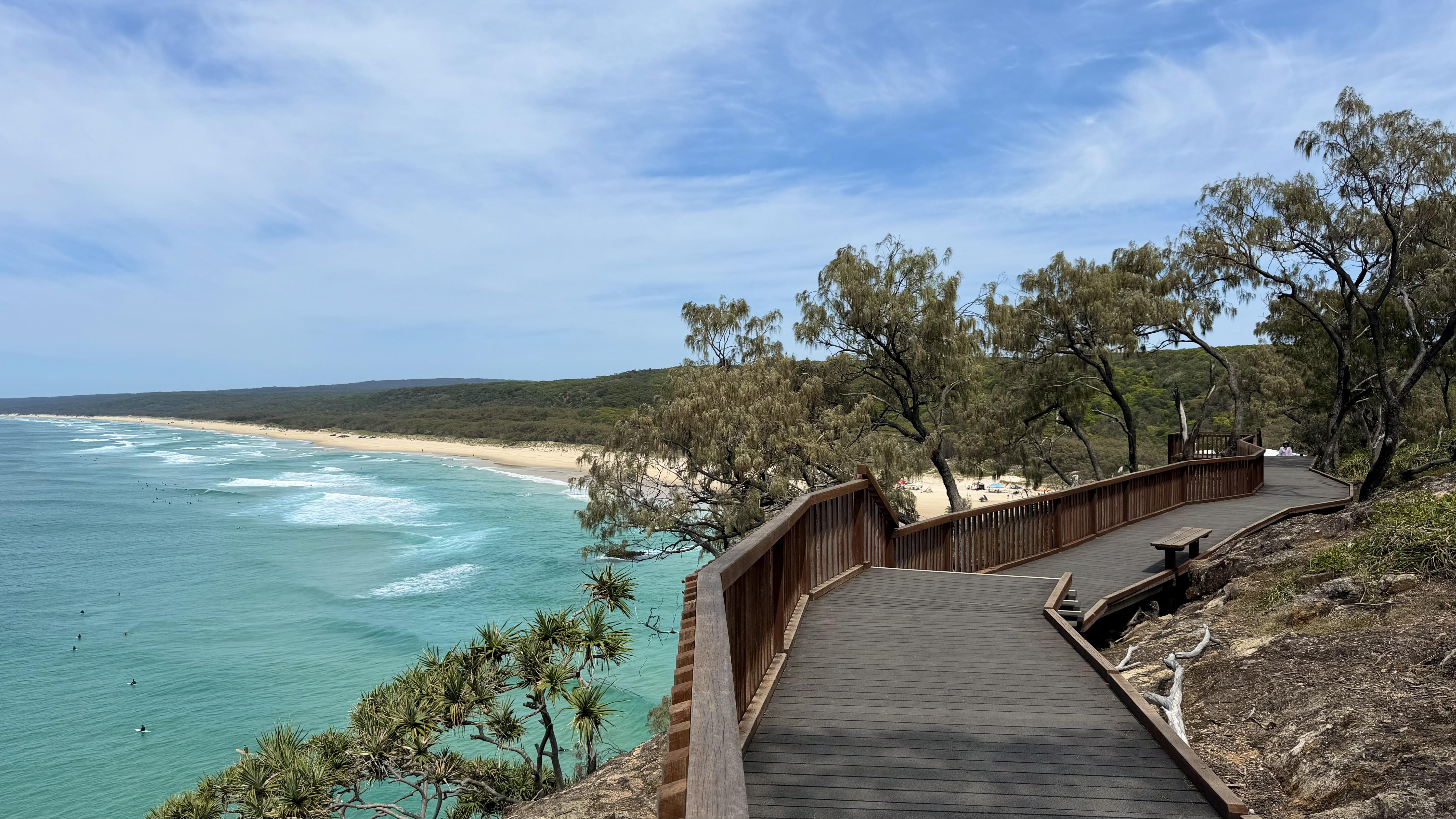
Above photo of North Gorge Walk by Aussie Bucket List.
Summer (Dec-Feb): Warmest, good for surf and beach camping, but busy. Book early.
Autumn/Spring: Milder weather, fewer crowds, great for camping and exploring.
Winter (Jun-Aug): Cooler nights, but if you’re prepared it’s crisp, clean, and less busy — whale watching season begins.
8 - Environmental & Safety Considerations
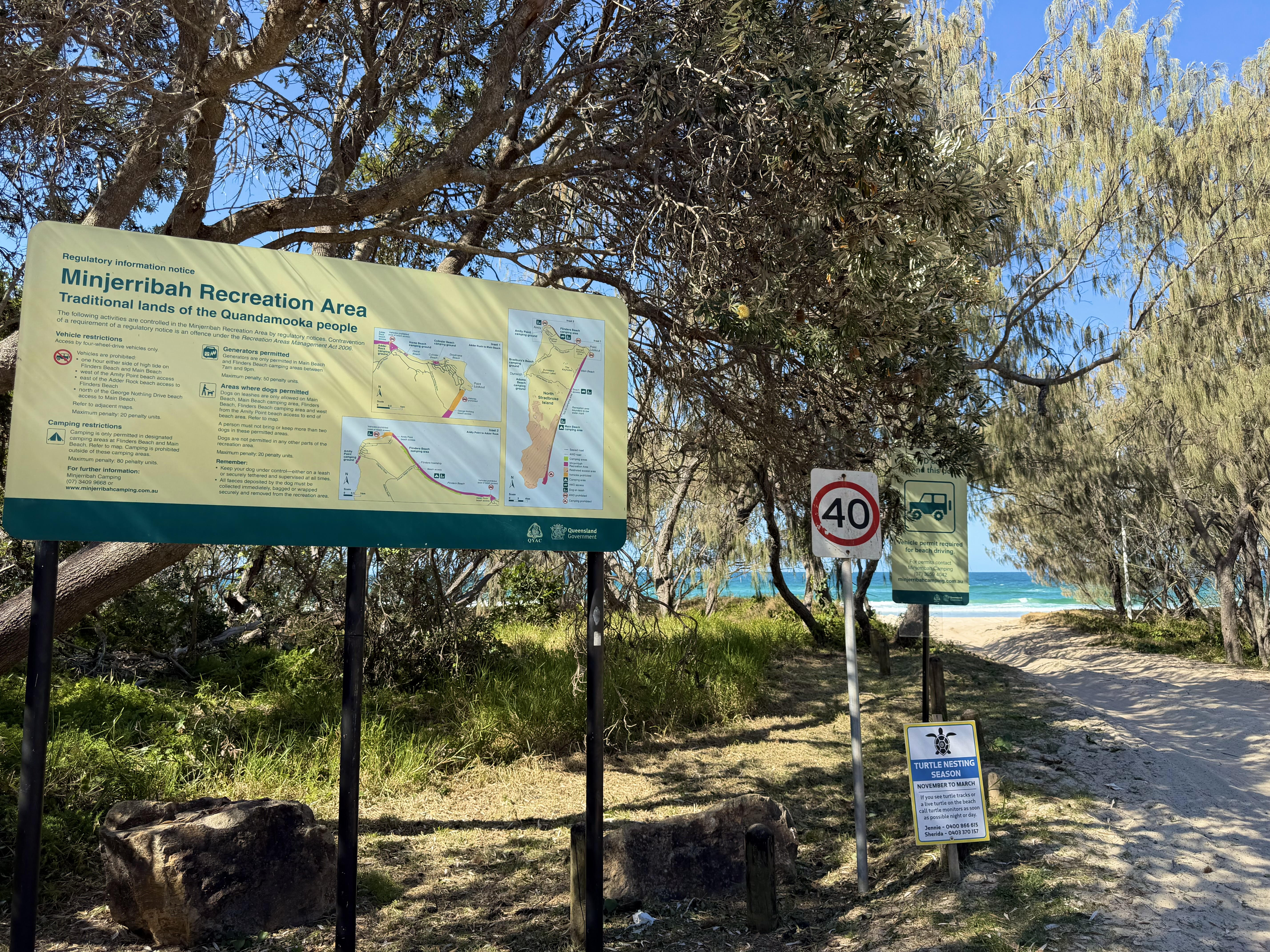
Above photo of beach access entrance to Flinders Beach by Aussie Bucket List.
Driving on sand impacts the ecosystem — stay on permitted tracks, don’t damage dunes or vegetation.
Wildlife is present everywhere. Drive slowly, especially at dawn/dusk. Be mindful of turtles on beaches, koalas in trees, and kangaroos near camps.
Weather can change quickly; camp gear must be suitable for rain, hail or shine. Rain can make some 4WD tracks impassable.
Tides matter: for beach driving, avoid high tide zones and soft sand near the waterline.
9 - Final Checklist Before You Go
- Vehicle ferry booked (if bringing car)
- 4WD permit and camping booking secured (especially for beach zones)
- Tyre pressure reduction gear and recovery gear on board
- Pack lists prepared (see Section 4)
- Camping/travel insurance sorted
- Plan for fuel — there are limited services on the island
- Respect the land: “leave no trace”, minimise campfire smoke, pick up litter
If you make the trip to North Stradbroke Island and do it right — with the proper gear, the right mindset, and a dose of adventure — you’ll come away with something truly memorable. It’s not luxury luxe, and it won’t hold your hand. But for those wanting real beach-front camping, 4WD tracks and nature immersion, it ticks all the boxes. The wild beauty of Minjerribah deserves your respect, preparation and full enjoyment of it's unique beauty.
So gear up, lock in your bookings, and get ready for one of our all time favourite Queensland coast’s best escapes!
We hope this guide to North Stradbroke Island helps you with planning your trip to Straddie. Please be sure to tag Aussie Bucket List in your Straddie posts on social media and reach out via email gday@aussiebucketlist.com.au if you have any questions at all. We are always happy to help answer any questions you may have.
